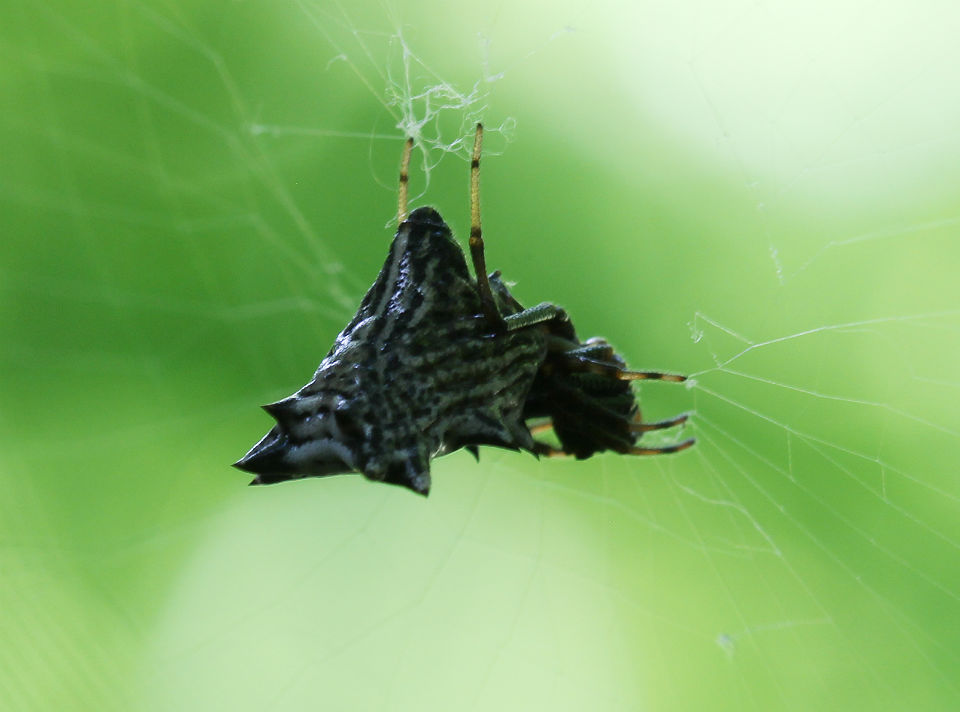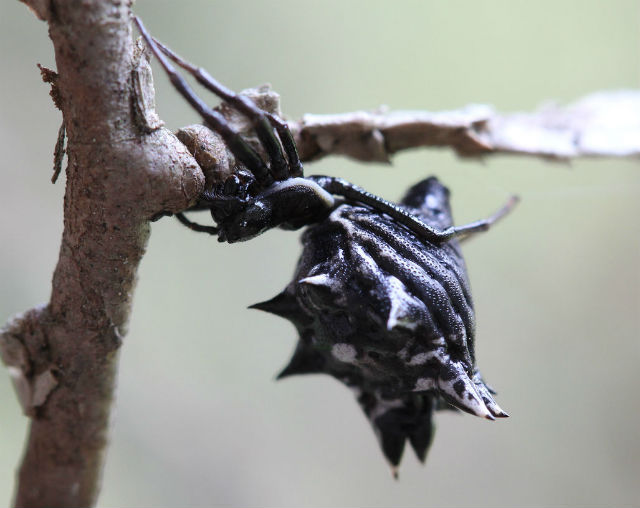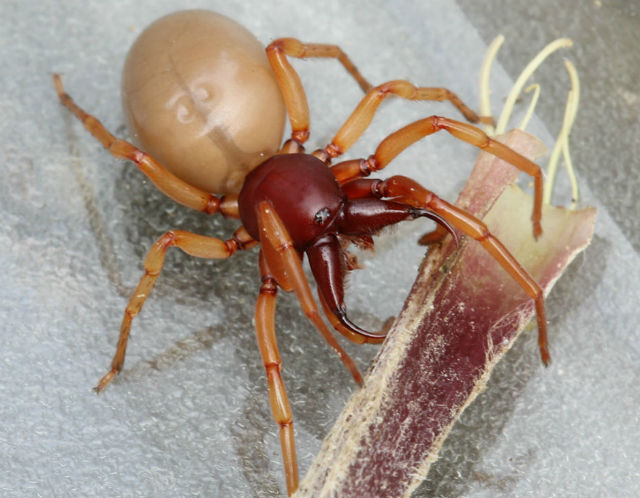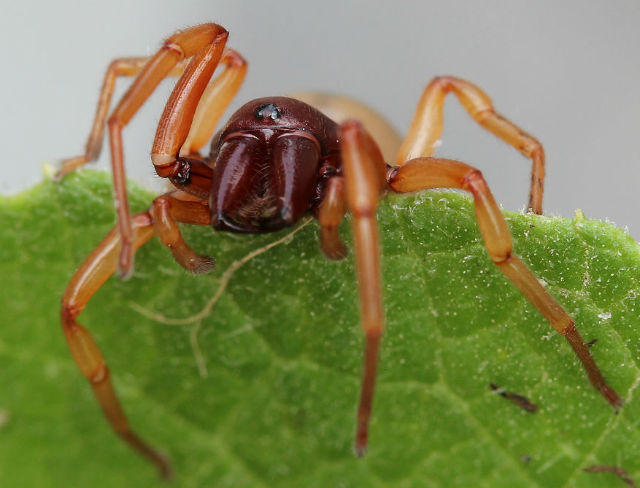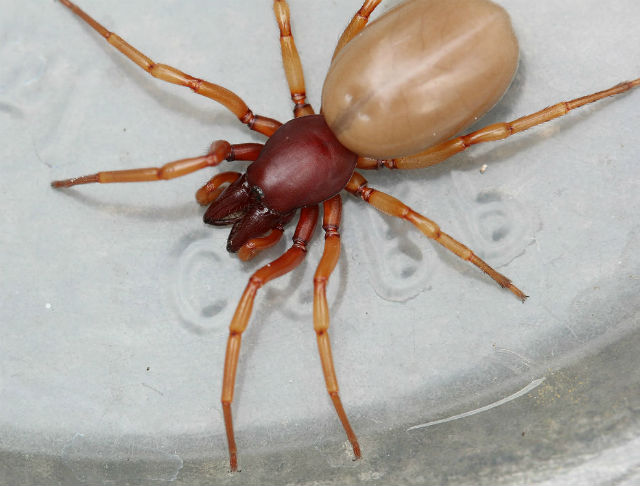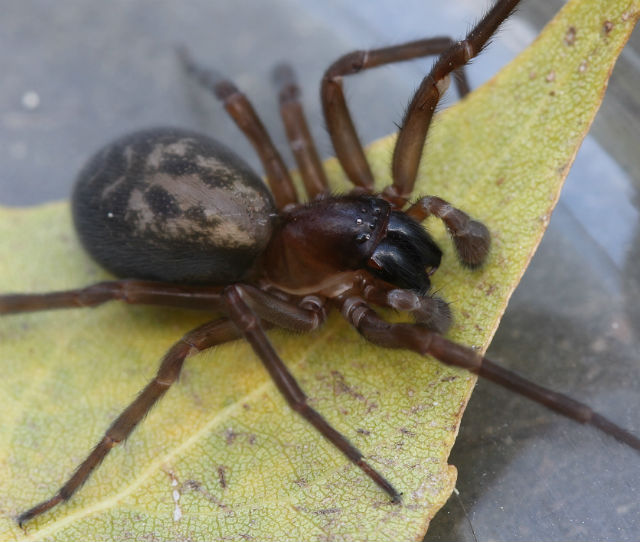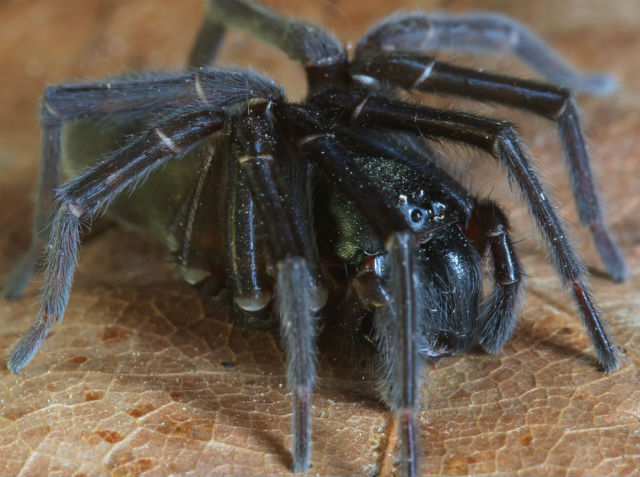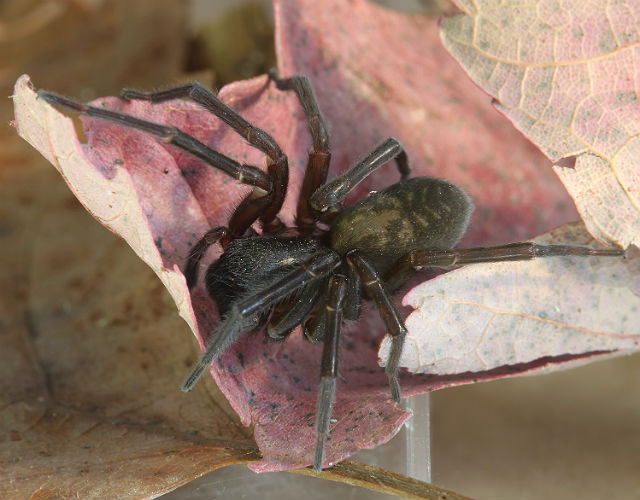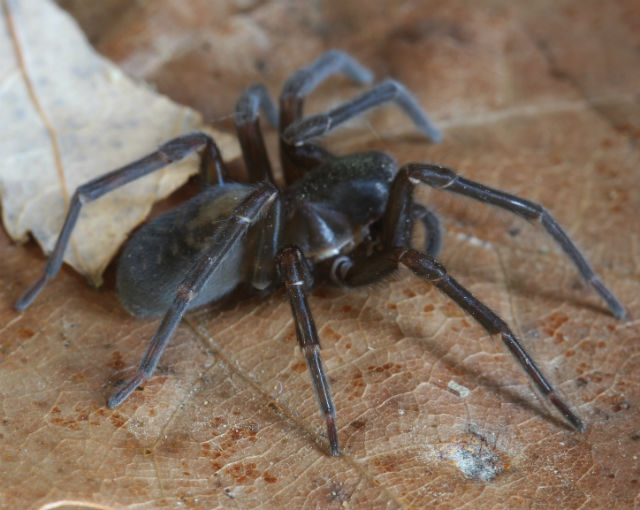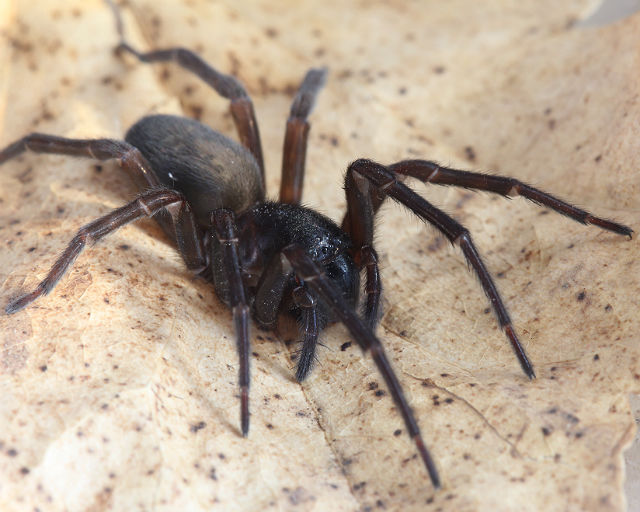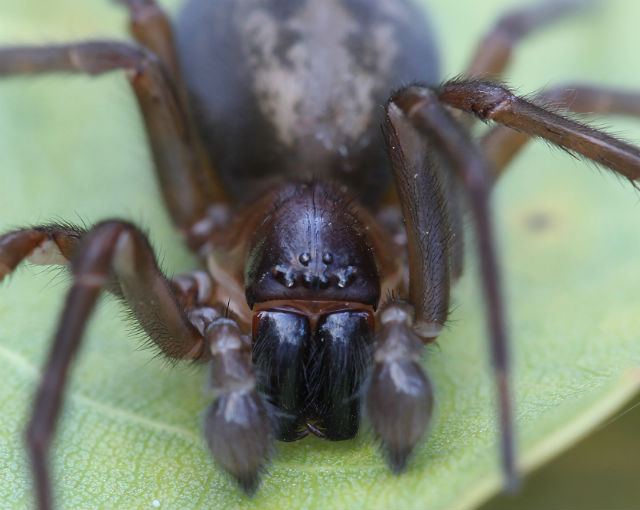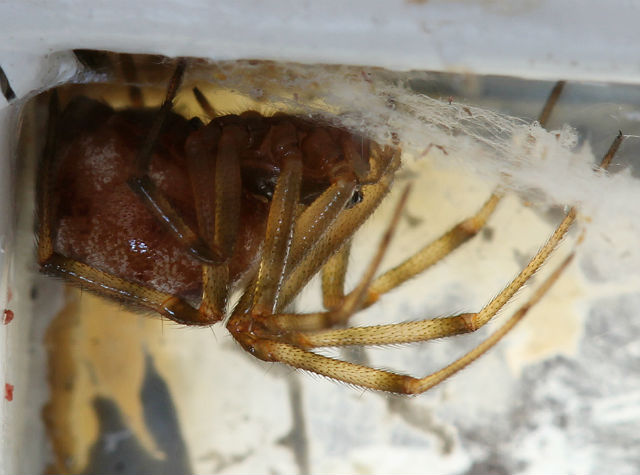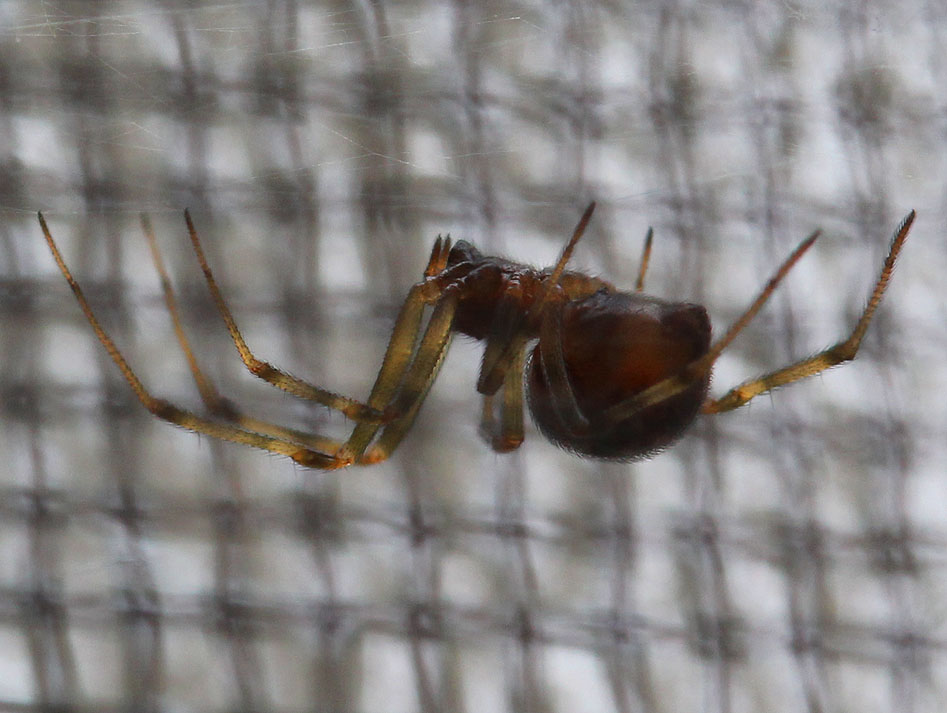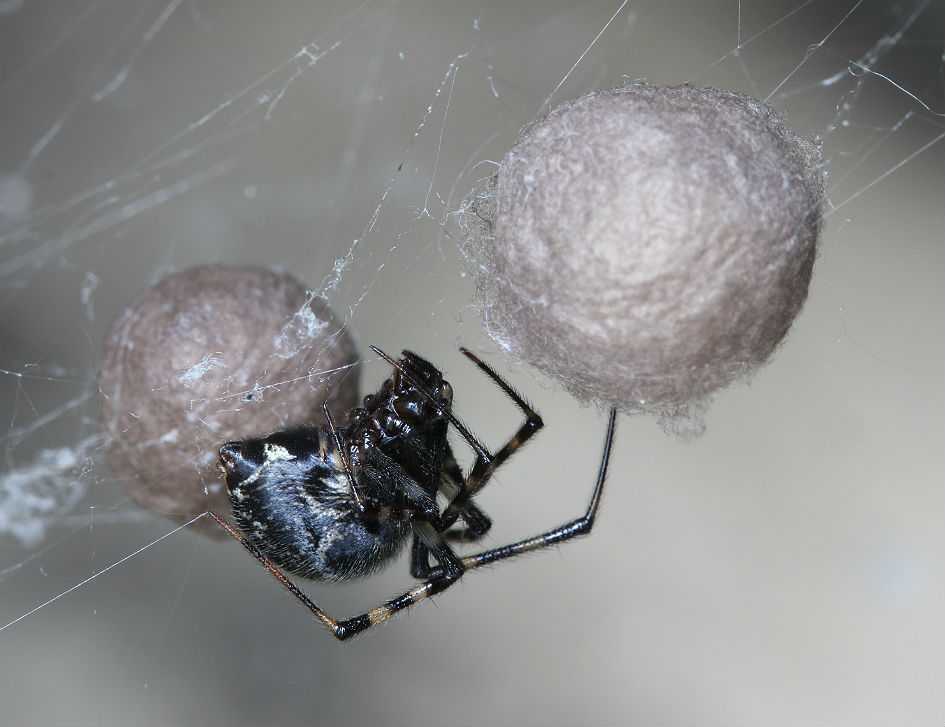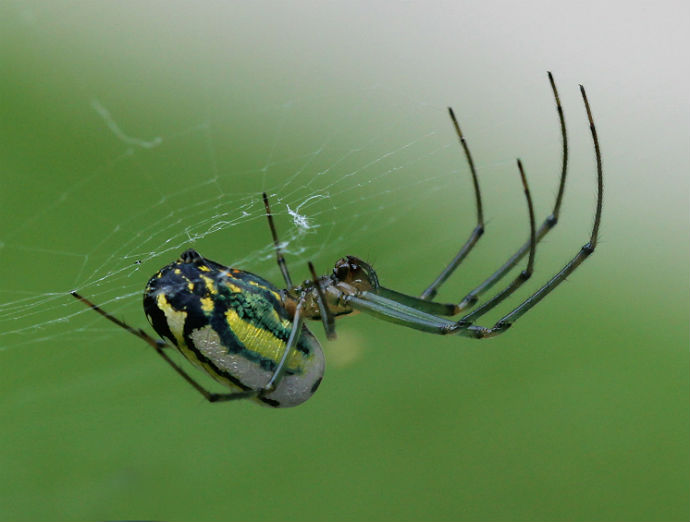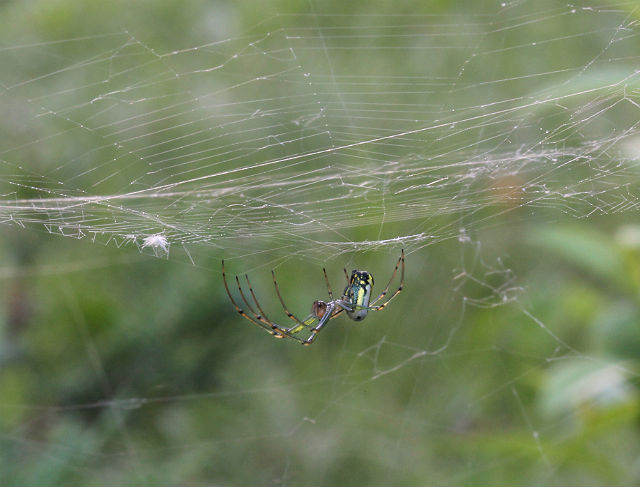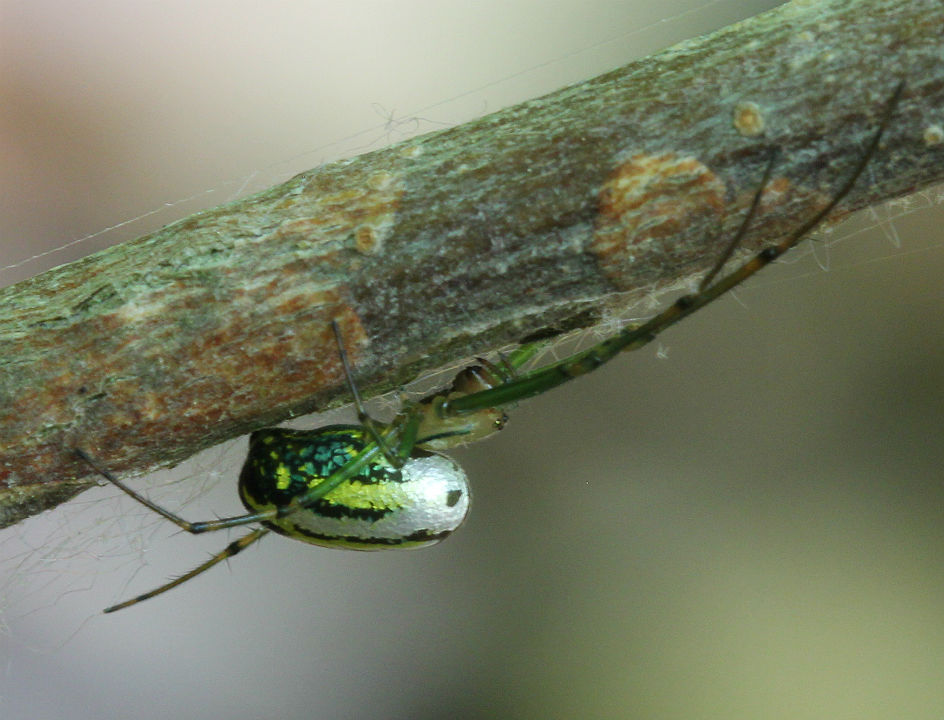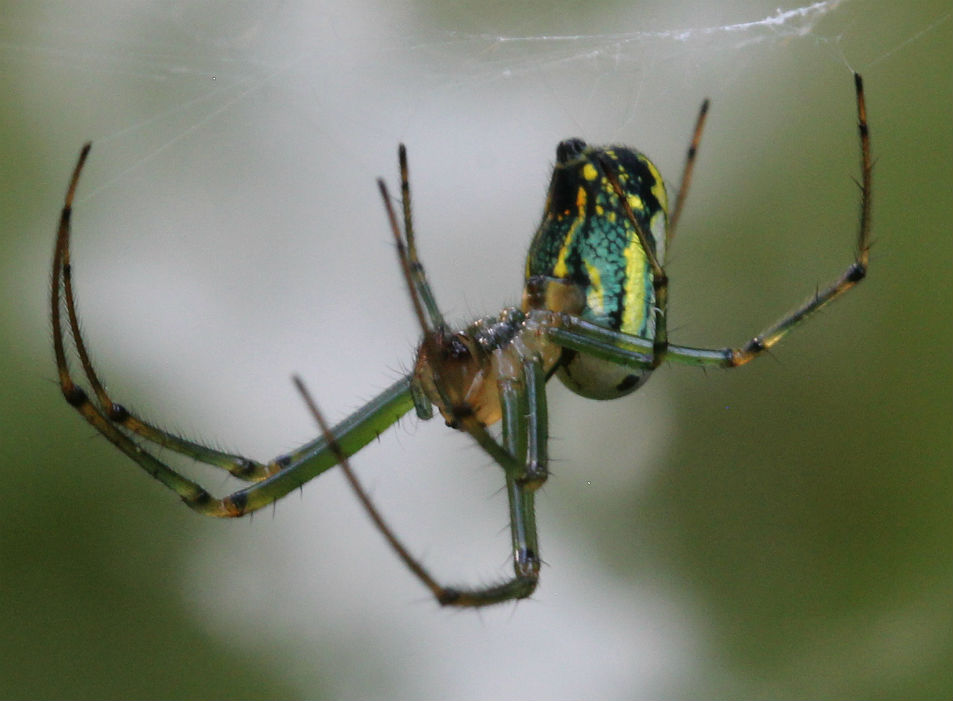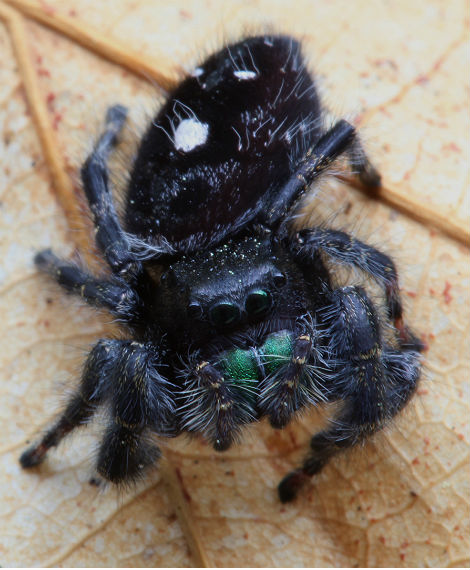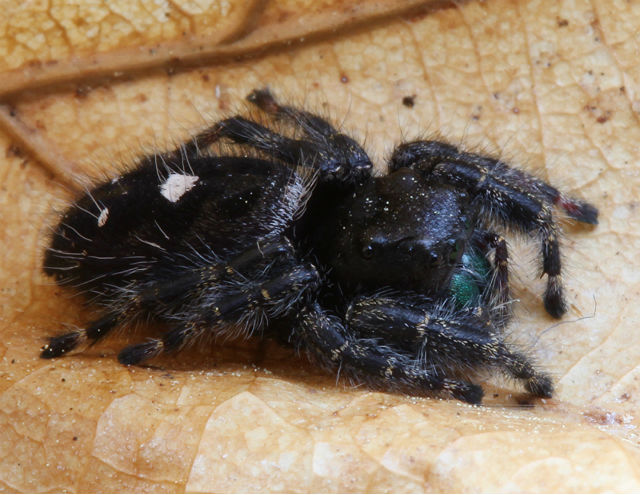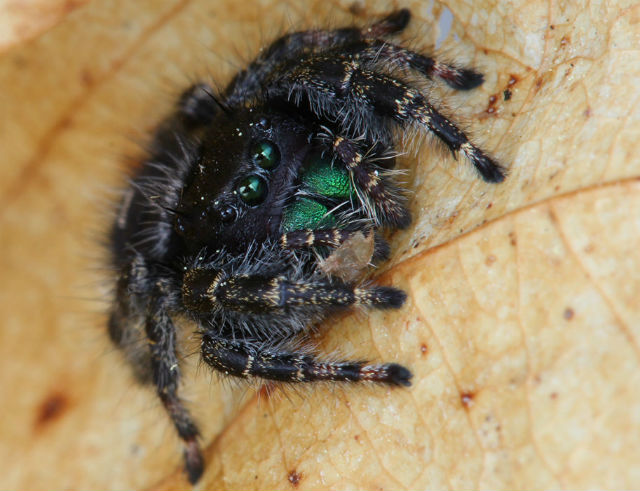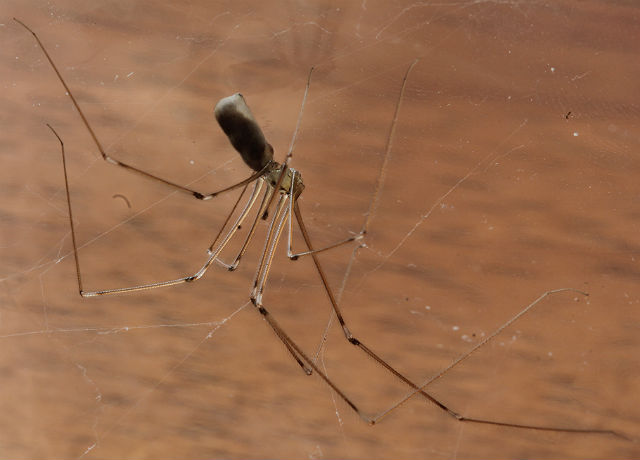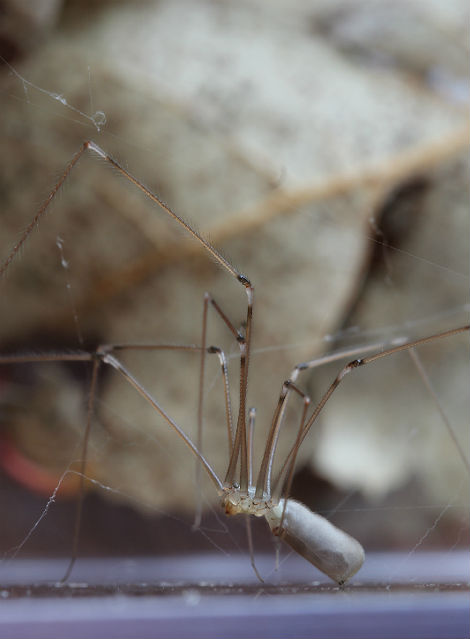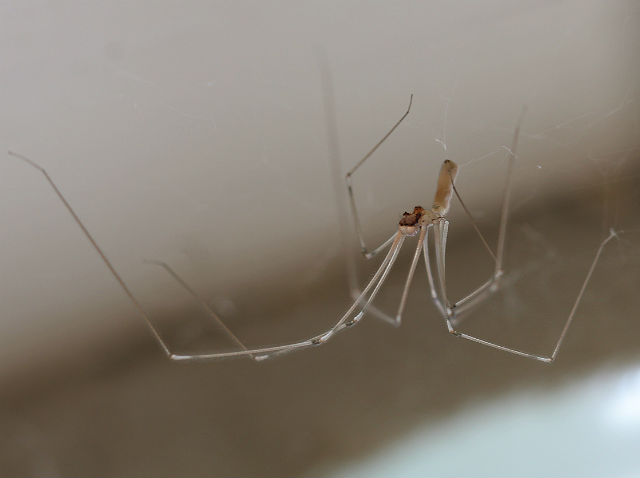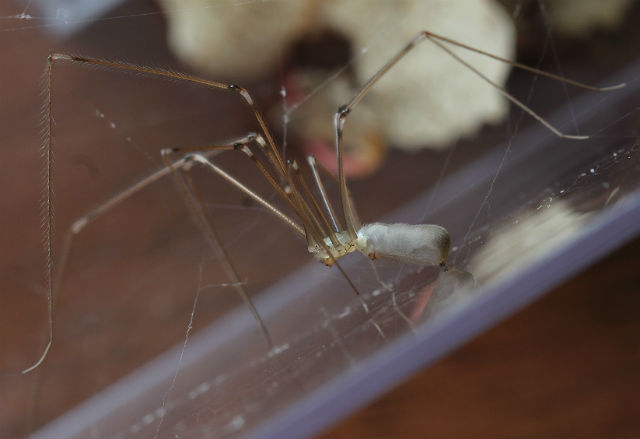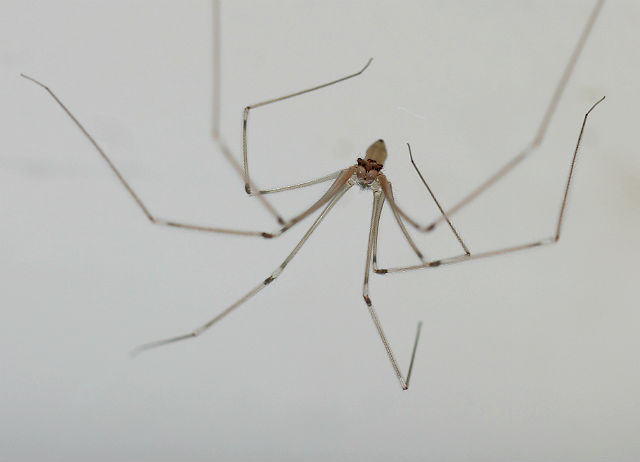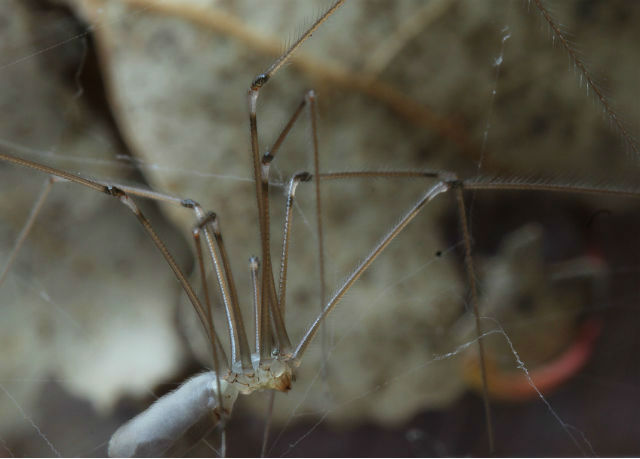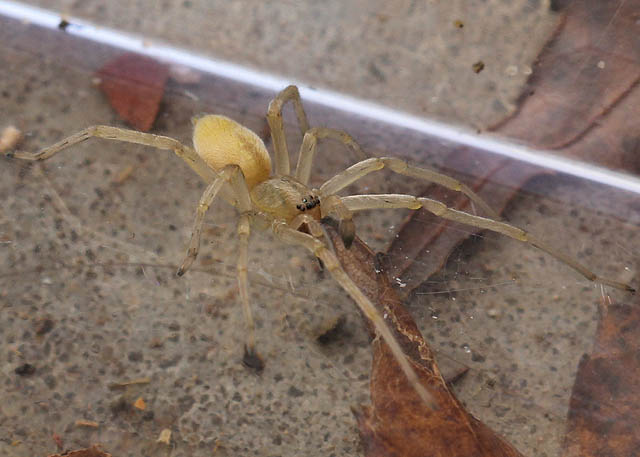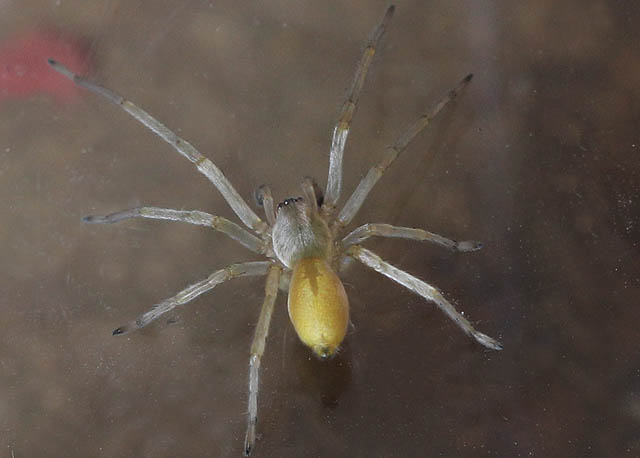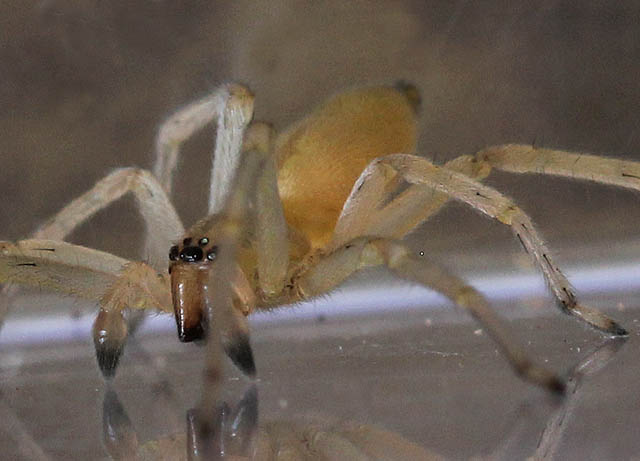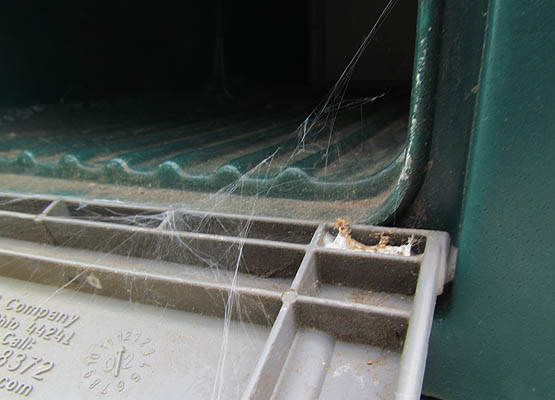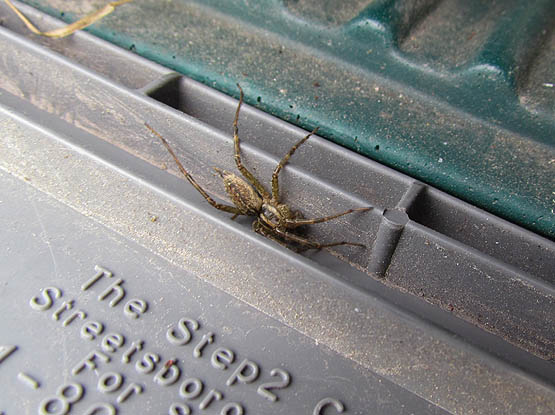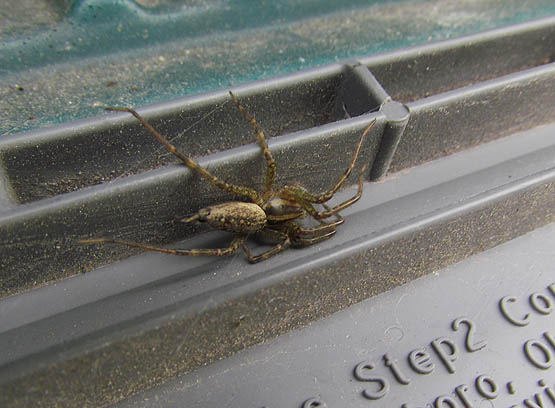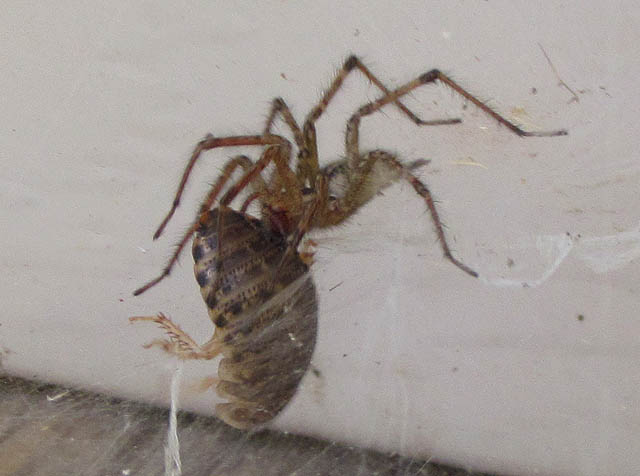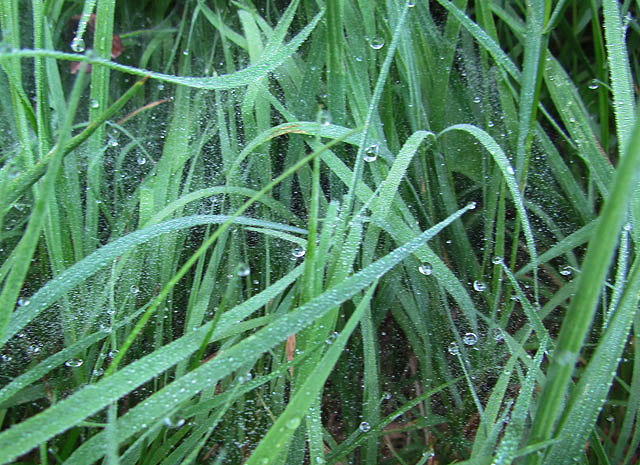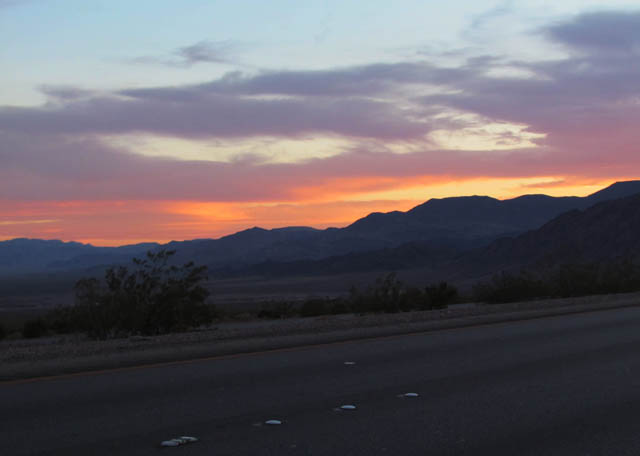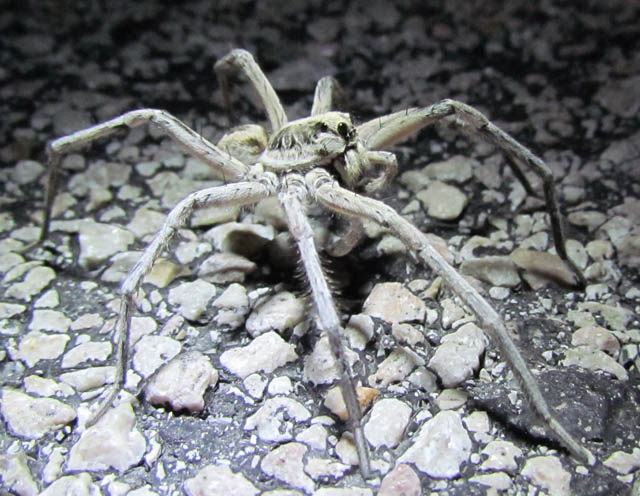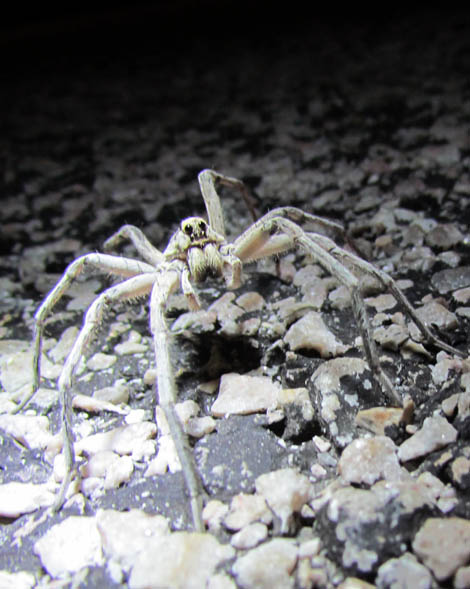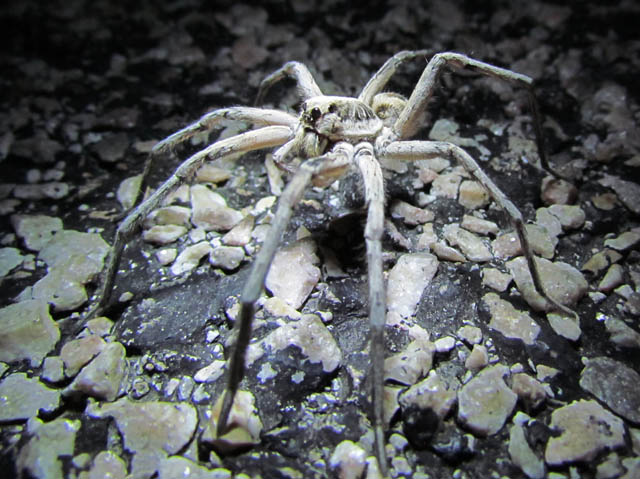If you’ve ever walked through a spider web in the woods, chances are it was a micrathena’s web. As an added “bonus” they tend to make their webs at face level.
This is a small species, about 1/2 inch long, with a chunky abdomen with ten spines on it. The abdomen can vary in color, but is usually it is whitish, yellow, or brownish-black. Only female Spined Micrathenas build webs. Male are about half the size of females. They only have a couple of spines and a much flatter abdomen.
To trap prey, this spider builgs her web between shrubs or small trees, three to seven feet off the ground. Insects that try to fly in between the trees don’t see the web and get caught.
The female Spined Micrathena eats her web each evening and constructs a new web the following morning. I had one that is living in my front yard this past Summer, and she built each web in the same spot.
In the daytime the spider hangs out in the center of her web, with her head pointing down. As soon as she feels the vibrations of prey trapped in her web, she runs to bite it. These spiders are slow and clums and many insects escape before they are caught.
Male Spined Micrathenas don’t build webs, though they do weave a “mating thread.” The male finds a female’s web, and weaves his mating thread onto her web. When he’s ready, he quickly runs out and mates with her. Males often do not survive the encounter.
This is a small, yet very cool spider that I usually enjoy coming across (unless I walk face-first into one of their webs).



